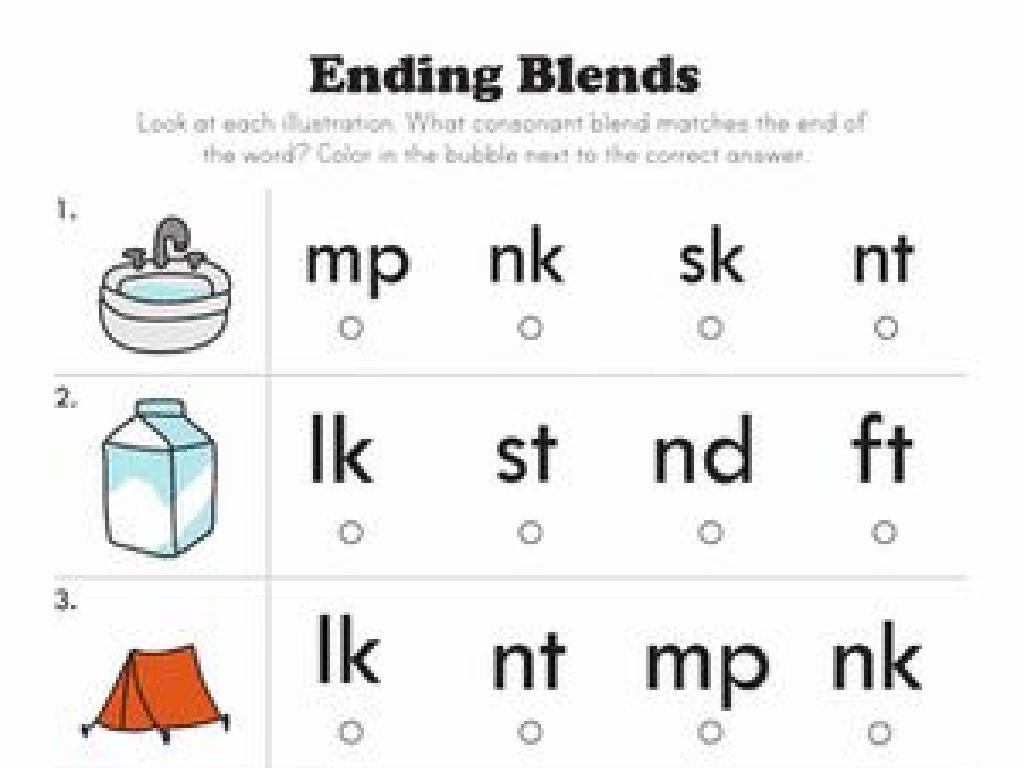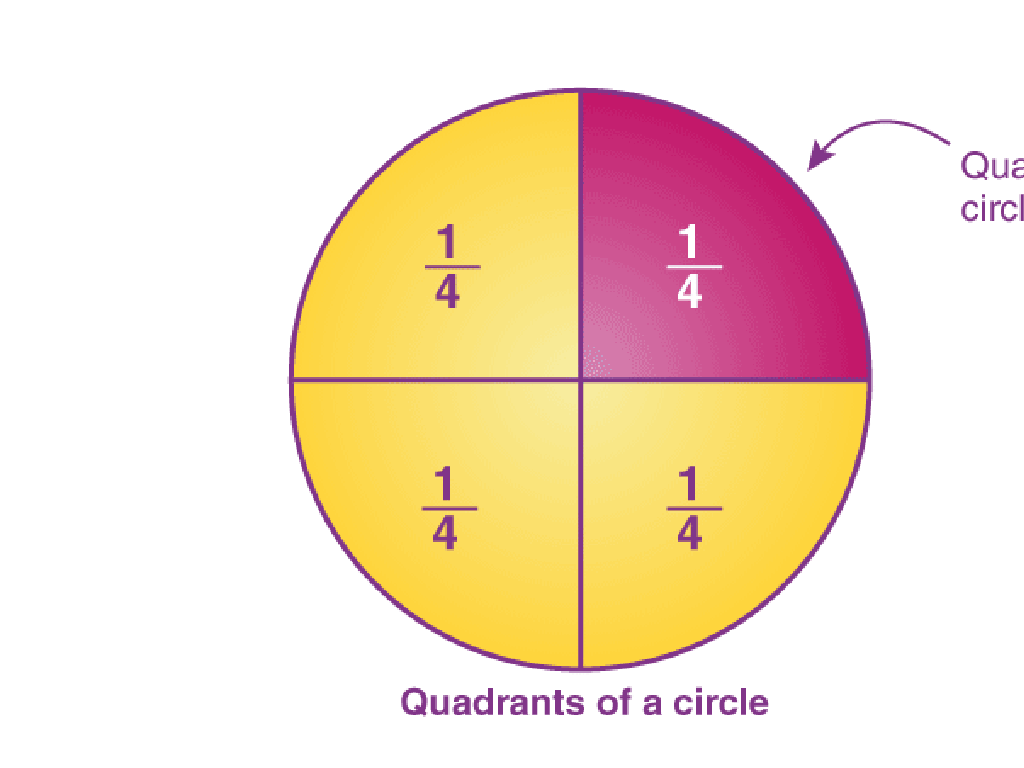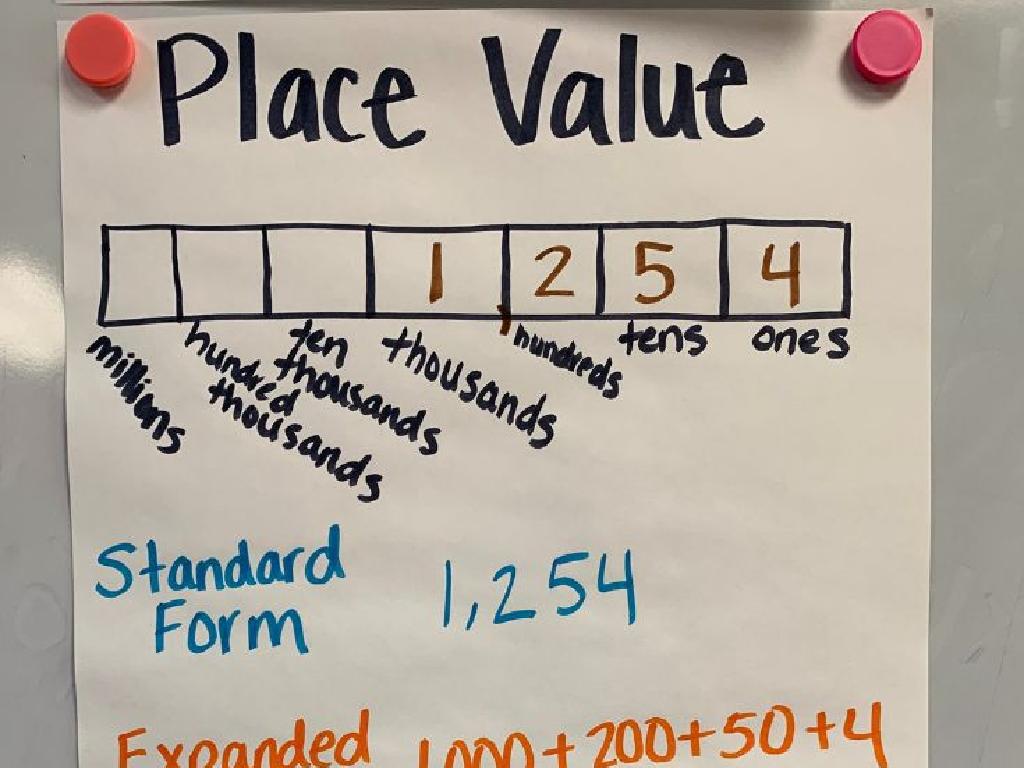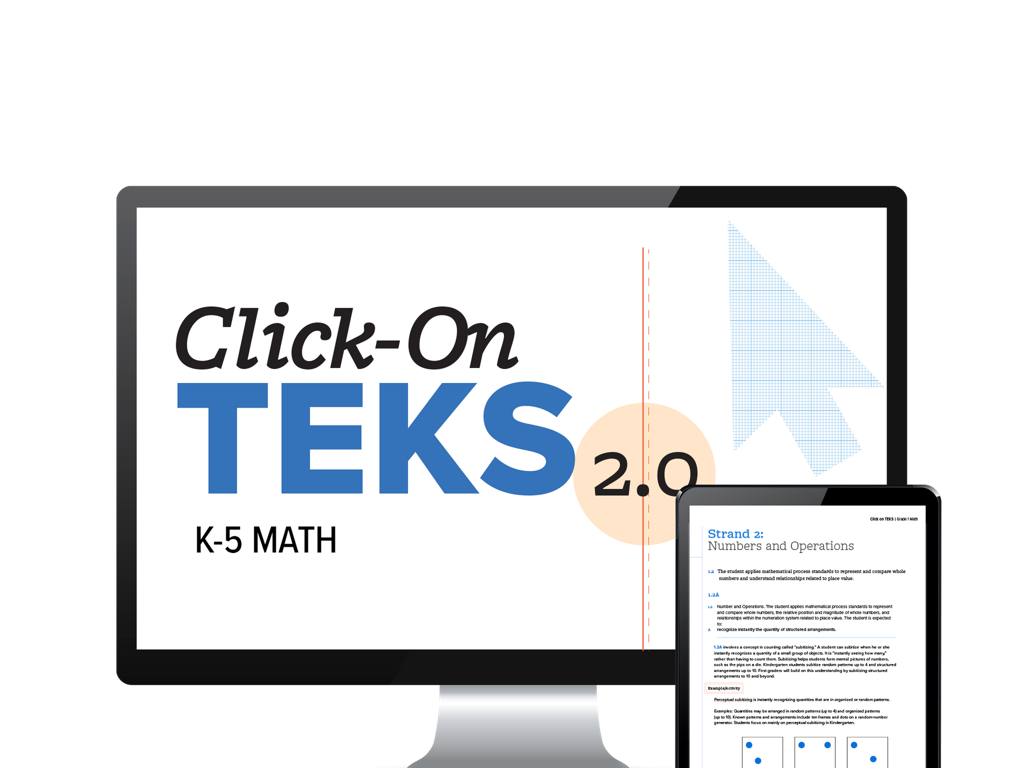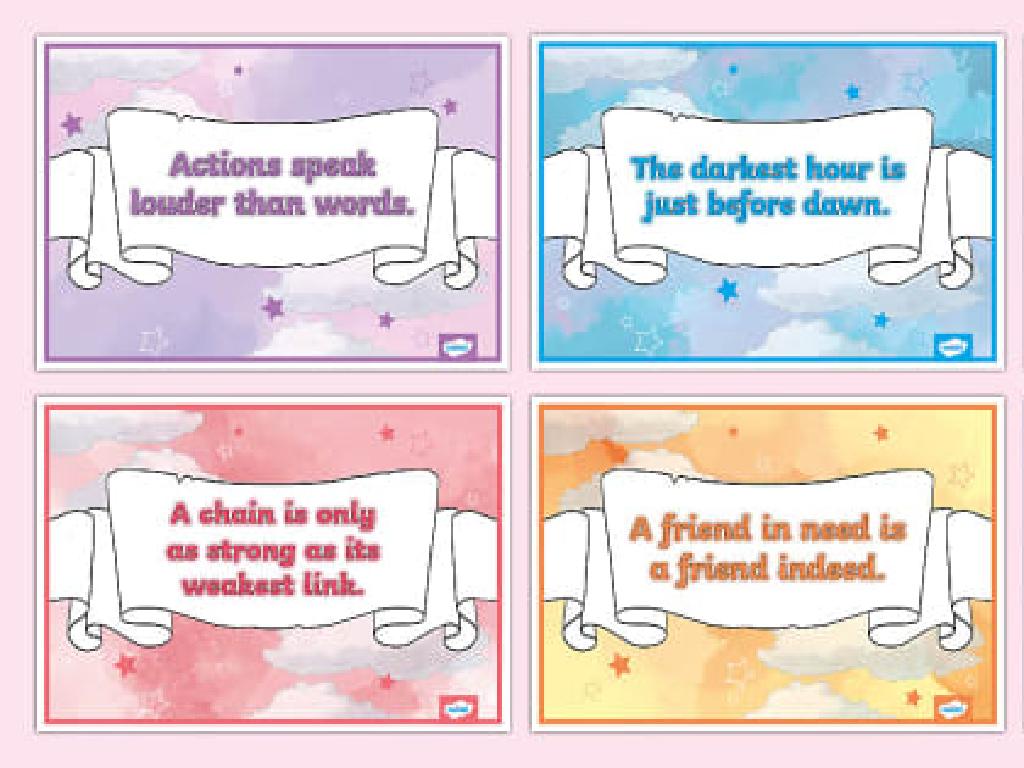Counting Tens And Ones - Up To 99
Subject: Math
Grade: First grade
Topic: Place Value
Please LOG IN to download the presentation. Access is available to registered users only.
View More Content
Welcome to Place Value!
– Learning about numbers
– Tens and Ones explained
– Groups of ten are ‘tens’, single items are ‘ones’
– Counting up to 99
– Using tens and ones, we can make any number up to 99
– Fun with numbers!
|
This slide introduces the concept of place value, which is fundamental in understanding how to count and work with numbers. Start by engaging the students with the idea that numbers are made up of tens and ones. Explain that ‘tens’ are like bundles of ten items, and ‘ones’ are just single items. Use visual aids like blocks or beads to show how ten ones make a ‘ten’. Then, demonstrate how to count using tens and ones up to 99, showing that numbers are composed of a certain number of tens and some extra ones. Incorporate interactive activities where students can practice grouping items into tens and ones to reinforce the concept. The goal is to make the students comfortable with counting and recognizing numbers up to 99 using place value.
Understanding Place Value: Tens and Ones
– What is place value?
– It tells the value of each digit in a number.
– Each number has a place
– Focus on ‘Tens’ and ‘Ones’
– We’ll learn about the first two places.
– Counting with tens and ones
– Practice counting objects in groups of ten and single items.
|
This slide introduces the concept of place value, which is fundamental in understanding how numbers are constructed and how to count effectively. Emphasize that each digit in a number has a specific place that determines its value. Use simple examples to show that the ‘Tens’ place represents groups of ten, and the ‘Ones’ place represents single units. Engage the students with hands-on counting activities using objects like blocks or beads to group into tens and ones, helping them visualize the concept. Encourage them to think about numbers in terms of tens and ones as a foundation for future math skills.
Counting with Tens
– Understanding ‘Tens’
– A ‘Ten’ has 10 ones, like 10 pennies making a dime.
– Making bundles of ten
– Group objects in sets of 10 to simplify counting.
– Counting by tens is fun
– We can skip count by 10s: 10, 20, 30, up to 100!
– Practice counting together
– Let’s count objects in class by tens as a group activity.
|
This slide introduces the concept of ‘Tens’ as a foundational element of place value, which is crucial for understanding how to count and work with larger numbers. Start by explaining that a ‘Ten’ is a group of 10 single units, which can be anything from pennies to blocks. Demonstrate making bundles of ten with classroom objects to visualize the concept. Engage the class in counting by tens to highlight how it makes counting larger quantities quicker and easier. Incorporate a hands-on activity where students can practice grouping items into tens and counting them together, reinforcing the concept through participation.
Counting with Ones
– Understanding ‘One’ as a unit
– ‘One’ is a single item or unit, like 1 apple
– Counting with ones before tens
– If we have less than 10 items, we count them as ones
– Practice counting single units
– Let’s count items like pencils or blocks one by one!
– Ones are the building blocks
– Every number starts with ones, they’re very important
|
This slide introduces the concept of ‘ones’ as the fundamental units of counting in mathematics. It’s crucial for first graders to grasp that a ‘one’ represents a single, standalone unit, which can be anything from an apple to a block. Before moving on to tens, students should be comfortable counting individual ones. Use tangible items like crayons or toys to help them practice. Emphasize that ones are the building blocks of all numbers and that understanding ones is the first step in learning place value. During the lesson, engage the students in counting exercises with real objects to solidify their understanding.
Combining Tens and Ones
– Tens and ones make numbers
– Example: 3 tens + 4 ones = 34
– Like building blocks, 30 + 4 combines to 34
– Build numbers with tens and ones
– Use blocks or drawings to show 10s and 1s
|
This slide introduces the concept of place value, specifically focusing on how tens and ones can be combined to form two-digit numbers. Start by explaining that the ‘tens’ place is the second digit from the right in a number, and the ‘ones’ place is the first digit from the right. Use physical manipulatives like blocks or drawings to help students visualize the concept. For example, show 3 groups of ten blocks and 4 single blocks, then combine them to show a total of 34 blocks. Encourage students to practice with different combinations of tens and ones to build various numbers up to 99. This hands-on activity will help solidify their understanding of place value and the base-ten system.
Counting to 99 with Tens and Ones
– Count up to 99 using tens and ones
– Practice counting on a number line
– A number line helps us see the numbers in order
– Understand groups of ten
– Ten ones make a group of ten, like a bundle of sticks
– Adding ten moves us forward
– When we add ten, we jump to the next bundle
|
This slide is aimed at helping first graders understand the concept of place value and counting using tens and ones. Start by explaining that numbers are made up of tens and ones, and that we can count all the way to 99 using these. Introduce a number line as a visual aid to help them see the sequence of numbers and understand how to count in tens. Emphasize that every group of ten ones forms a ‘bundle’, and adding a ‘bundle’ means moving to the next group of ten on the number line. During the class, engage students in counting exercises using the number line, and encourage them to visualize adding ‘bundles of sticks’ to reinforce the concept of tens. This hands-on approach will help solidify their understanding of place value and counting in a fun and interactive way.
Activity Time: Making Numbers with Tens and Ones
– Create numbers using blocks
– Listen for numbers to build
I’ll say ’34’, use three ‘tens’ blocks and four ‘ones’ blocks.
– Partner up for teamwork
Find a buddy to work with during this activity.
– Help each other with blocks
If your friend is stuck, show them how!
|
This activity is designed to reinforce the concept of place value by having students physically manipulate blocks to represent tens and ones. As you call out different numbers, students will use ‘tens’ blocks and ‘ones’ blocks to build the number. Encourage them to work in pairs to foster collaboration and peer learning. Possible numbers to call out include 23 (two ‘tens’, three ‘ones’), 45 (four ‘tens’, five ‘ones’), 67 (six ‘tens’, seven ‘ones’), and so on. Observe the pairs and offer guidance as needed. This hands-on experience will help solidify their understanding of how numbers are composed of tens and ones, up to 99.
Class Activity: Number Scavenger Hunt
– Let’s explore tens and ones
– Find objects for tens and ones
– For example, pencils could be ‘tens’ and erasers ‘ones’
– Create numbers with objects
– Use 10 pencils for ‘ten’ and 2 erasers for ‘one’ to make ’12’
– Share your numbers with the class
|
This interactive activity is designed to help first graders understand the concept of tens and ones in a tangible way. By searching for objects around the classroom, students will physically represent numbers up to 99. Teachers should guide students to group items in tens and single units to create different numbers. Possible objects to use could be pencils, erasers, blocks, or beads. After the hunt, each student will explain how they created their number using the objects. This activity not only reinforces the concept of place value but also encourages teamwork and communication among students.

